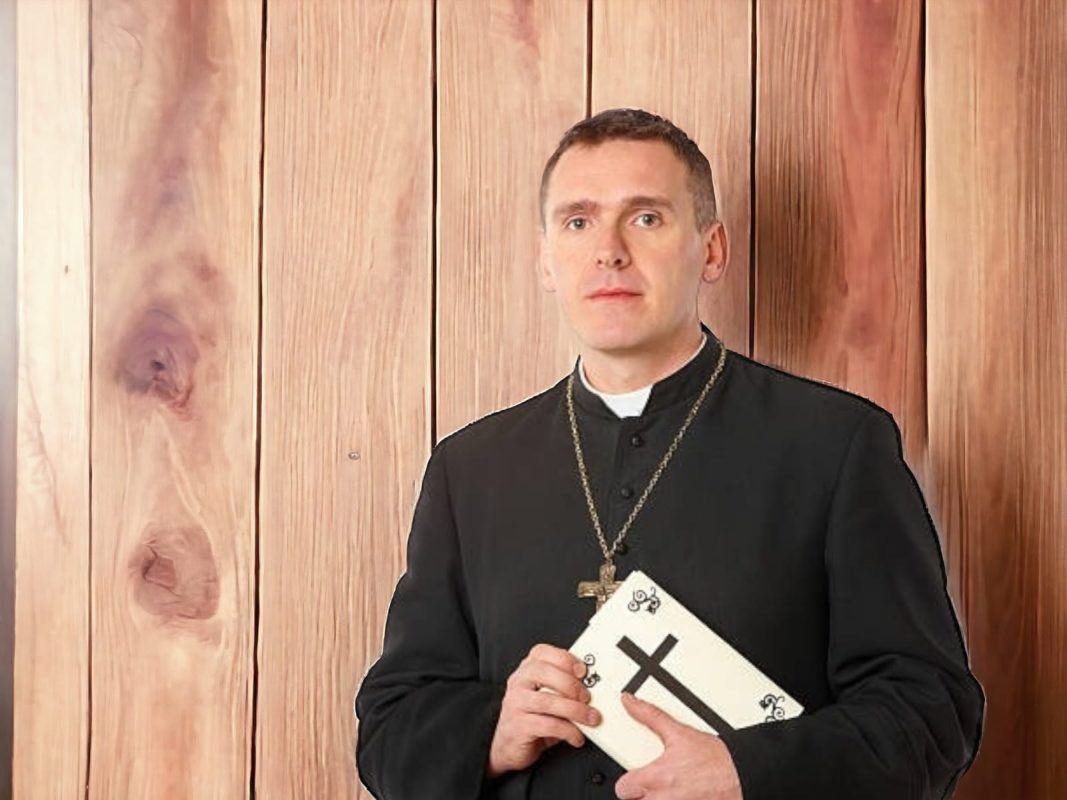Clergy Robes for Men
Why are there 33 buttons on a cassock?
The Significance of 33 Buttons on the Cassock
In the realm of religious vestments, the Clergy Cassock stands as a timeless symbol of devotion and tradition. Its austere yet dignified appearance has captivated the faithful for centuries, with every element carrying deep symbolism and meaning. Among its many distinctive features, one often overlooked aspect is the presence of precisely 33 buttons adorning the front. While seemingly mundane, the significance of these buttons is profound, intertwining religious history, numerology, and spiritual symbolism.
To understand the significance of the 33 buttons on the Clergy Robe for Mens, one must delve into the rich tapestry of Christian tradition. The number 33 holds immense importance in Christianity, as it represents the number of years Jesus Christ lived on Earth. It encompasses His earthly ministry, from His baptism to His crucifixion and resurrection. This period is often referred to as the “hidden life” of Jesus, where He performed miracles, preached the Gospel, and ultimately fulfilled His divine mission.
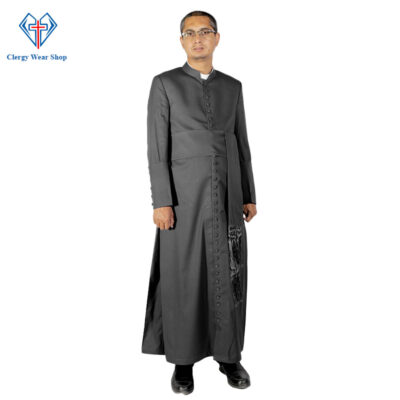
Incorporating 33 buttons onto the Clergy Apparel serves as a tangible reminder of Christ’s earthly journey and nhis ultimate sacrifice for humanity. Each button becomes a symbol of His years of life, imbuing the garment with a sacred significance that transcends its mere utilitarian purpose. As clergy don the cassock, they are not only adorned in traditional attire but also enveloped in the spiritual essence of Christ’s presence and teachings.
Moreover, the choice of 33 buttons also aligns with the broader symbolism of numbers within Christianity. Numerology has long been intertwined with religious practices, with certain numbers carrying specific meanings and connotations. In this context, the number 33 represents divine perfection and completeness, reflecting the culmination of Christ’s earthly mission and the fulfillment of God’s plan for salvation.
Furthermore, the meticulous placement of 33 buttons on the Clergy Black Cassock underscores the importance of attention to detail and reverence for tradition within the Church. Each button is carefully sewn onto the garment, reflecting the craftsmanship and dedication of those who create and wear it. In a world characterized by rapid change and fleeting trends, the cassock stands as a timeless symbol of continuity and steadfast faith.
Beyond its religious significance, the Priest outfit and its 33 buttons also serve as a visual representation of clerical identity and authority. When clergy members don the cassock, they not only embrace their sacred vocation but also publicly declare their commitment to serving God and His people. The presence of 33 buttons becomes a badge of honor, signifying the wearer’s role as a shepherd guiding the faithful on their spiritual journey.
33 buttons on the cassock are far from arbitrary; rather, it is steeped in centuries of religious tradition and symbolism. Each button represents a year of Christ’s earthly life, embodying His teachings, sacrifice, and divine perfection. As clergy don the cassock adorned with 33 buttons, they are not only clothed in tradition but also enveloped in the spiritual essence of Christ’s presence. In a world marked by change, the cassock stands as a timeless symbol of faith, continuity, and reverence for the divine.
In essence, the inclusion of 33 buttons on a cassock is a profound symbol of faith, representing Christ’s life, teachings, and sacrifice. It serves as a visual reminder of the divine presence within the Church and the enduring significance of tradition in the practice of Christianity.
Frequently Asked Questions (FAQs)
What is a cassock in the Catholic Church?
A clergy cassock is a traditional garment worn by clergy in the Catholic Church and other Christian denominations. It is a long, ankle-length robe with long sleeves, typically buttoned up the front, often made of black fabric. The cassock is a symbol of the clerical state and is worn during liturgical ceremonies, religious services, and formal occasions.
Who is allowed to wear a cassock?
In the Catholic Church, the cassock is primarily worn by ordained clergy, including priests, deacons, and bishops. It is also worn by seminarians during their training and formation for the priesthood.
Why are there 33 buttons on a cassock?
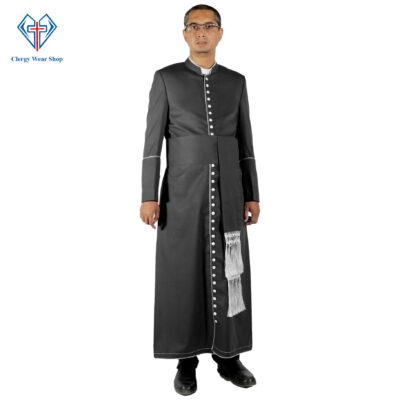
The presence of 33 buttons on a cassock holds deep significance within Christian tradition, representing the years of Jesus Christ’s earthly life. Each button symbolizes a year of Christ’s life, from His birth to His crucifixion and resurrection.
What is a Catholic priest’s outfit called?
The traditional outfit worn by Catholic priests, especially during formal occasions and religious services, is called a cassock. It is a long, black robe typically worn over a white clerical collar.
Can any priest wear a cassock?
Yes, any Catholic priest is permitted to wear a cassock as part of their clerical attire. However, the decision to wear a cassock may vary depending on individual preferences, cultural practices, and the requirements of their particular diocese or religious order.
Why do priests wear black?
The color black has long been associated with solemnity, humility, and simplicity in religious contexts. Catholic priests wear black cassocks as a symbol of their dedication to their vocation and their commitment to a life of service and sacrifice. Additionally, black is often considered a practical color for clergy attire, as it is both dignified and versatile.
What is a black cassock?
A black cassock is a specific type of cassock worn by clergy in the Catholic Church. It is a long, ankle-length robe with long sleeves, typically made of black fabric. The black cassock is a symbol of the clerical state and is worn by priests, deacons, bishops, and other ordained ministers during liturgical ceremonies, religious services, and formal occasions.

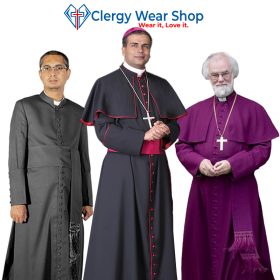 Clergy Cassocks for Men
Clergy Cassocks for Men Clergy Cassocks for Women
Clergy Cassocks for Women Clergy Robes for Women
Clergy Robes for Women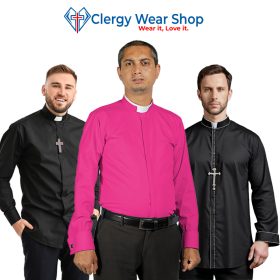 Clergy Shirts for Men
Clergy Shirts for Men Clergy Shirts for Women
Clergy Shirts for Women